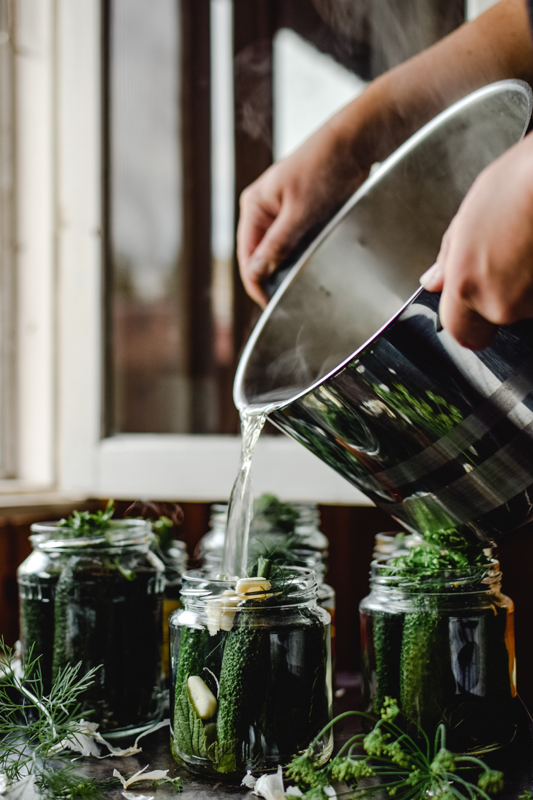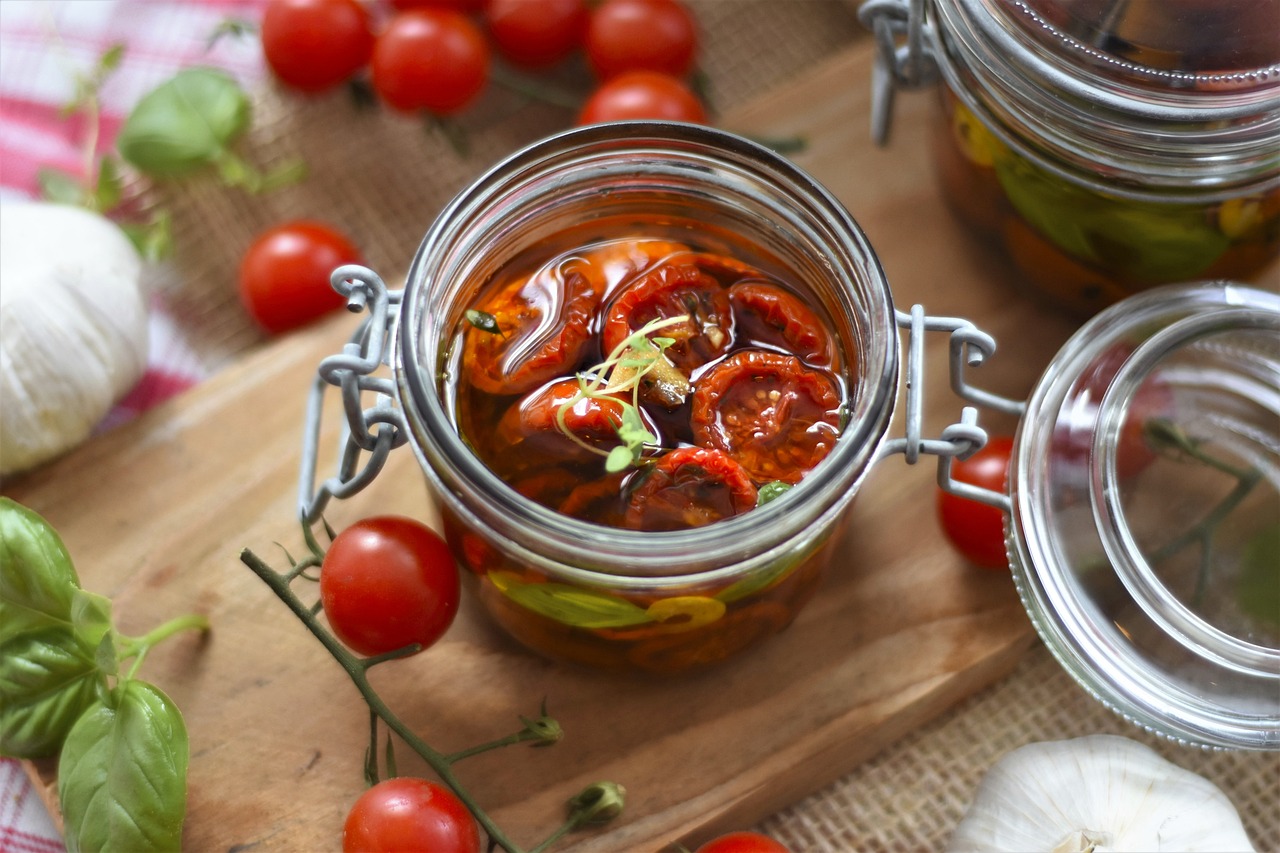Water-Bath Canning vs. Pressure Canning

When choosing how to pickle or what pickle recipe’s you would like to try, there are a number of things you want to keep in mind. One of those things is which canning method you would like to use. Home canning is a very simple process that can be done in two ways: pressure canning, or water-bath canning. Pressure canning is a process that requires a pressure canner, which can be often times, be expensive. You may however be able to find a cheap one with a little bit of hunting through garage sales or flea markets. Water-bath canning, on the other hand, can be done using only a couple of simple tools. We will assume that you will be using a water-bath canning method. The following article will explain this particular method.
Firstly, of course you will need a water-bath canner. You must make sure it is deep enough to hold enough water to submerge your canning jars by at least 1 inch. You will also need your canning jars, screw-on bands, and canning lids. It is the much-less-expensive, tried-and-true way of canning. It is a way of preserving hundreds of foods, including salsa, jam, jelly, pickled fruits and vegetables, as well as relish for hundreds of years. It is a great canning method for beginners, or avid canners.
A water-bath canner is basically a large pot with a rack that will hold up to seven mason quart jars or up to sixteen pint jars. By using a large stock pot and being creative with wire, one could improvise a rack to create their own water bath canner. As long as the jars avoid direct heat from the burner and are completely submersed in the water, a number of crafty setups could be used. If you would like to save the trouble of rigging your own, they can be readily purchased at many locations or online.
The way a water-bath canner functions is that it increases the temperature of your canning jar to a temperature hot enough to kill yeast, bacteria, and molds that are found in food. The heat also creates air bubbles that push the air inside the jar out as the contents inside the jar heat and expand. When the jar cools down to room temperature, the air pressure creates a seal that prevents air and other organisms from entering the jar, preventing the food from spoiling, thus the reason for canning existence.
It is essential that the jars are free of nicks or cracks and that the rim is flat. They should also be newly washed, either by hand or dishwasher, so they are sterile and free of any micro-organisms. The process begins by filling the canning jar with the desired ingredients. Make sure to wipe the rim clean with a laundered towel so as to create an ideal seal. Place the lid on the rim, making sure to center it so that the rubber is on the entire rim and then screw on the band. The band does not need to be screwed on tightly; over-tightened bands do not allow the gasses to escape the jars. Then you will place the jars into the water-bath on the rack. Make sure the water is covering all of the jars by at least one inch and then bring the water to a boil. When finished, turn off heat and let sit for a full five minutes before removing jars from the canner. Be sure to let the canning jars cool, so as not to burn yourself.
As the canning jars cool off, the tops should pop closed as they seal, meaning that; after sealing the tops will not depress by pressing down on with your finger. If the jars are not sealed, the center of the lid will pop up and down when pressed. Either throw these jars away or eat the contents within a week. If the lids did not seal, do not use them again as they will not seal if used again.
Once the jars are cooled they may be stored. It is best if they are stored in a cool dark place like a basement or pantry. Contents will be ready to eat according to the recipe. Make sure that before eating, the contents are inspected for signs of spoilage: mold, gas, cloudiness, odors, or drainage. If spoilage has occurred, do not eat the contents of the can as it may cause serious sickness.
Here is a simple pickling recipe for you to try out!
Delicious Pickles:
- Wash cucumbers, pack into sterilized canning jars.
Solution (sufficient for 3 gallons of pickles in glass jars):
- 1 gallon vinegar
- 1 cup salt
- ½ pound (16 tablespoons) dry mustard, make sure to fully mix the dry mustard in with vinegar so that there are no clumps. A good way to do this is to take a little vinegar and make a paste type of substance with the dry mustard, then mix this into the vinegar.
Directions:
Pour mixture over cucumbers in your sterilized jars and seal at once (Using the method of your choice.). Store pickles without removing screw bands.
I hope that this helps you to choose your method of pickling.
Copyright 2006 Jonathan Heusman
The Author:
Jon Heusman is an avid pickler and canner. He has tried many pickle recipes and techniques.








